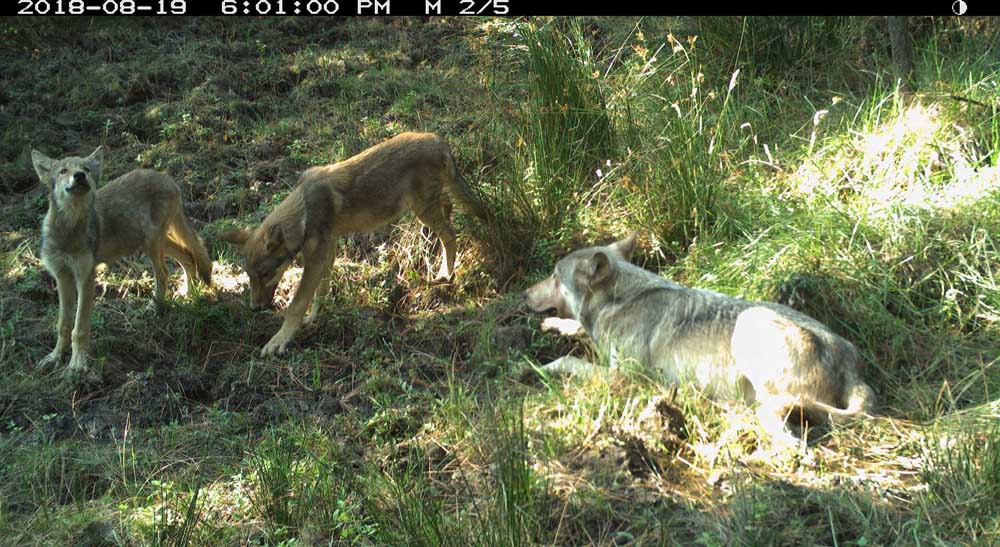Wolf pups spotted in north Central Oregon
Published 12:00 am Thursday, August 30, 2018

- These pups, thought to be a part of the White River wolf unit, have been spotted on the Warm Springs Indian Reservation. (Confederated Tribes of the Warm Springs/Submitted photo)
Central Oregon’s first resident gray wolf pair in decades was spotted earlier this month with a pair of pups in tow.
On Aug. 10, a trail camera on the Warm Springs Indian Reservation caught a pair of wolves accompanied by two pups south of Mount Hood. Michelle Dennehy, wildlife communications coordinator with the Oregon Department of Fish and Wildlife, confirmed that the wolves in question were likely members of the White River wolf unit, which was spotted in Wasco County in January.
While the wolves don’t yet constitute a pack under ODFW’s rules, they represent a step forward for Oregon’s small-but-growing population of gray wolves, as the third confirmed breeding pair outside of Northeast Oregon, and the first pair to give birth in Oregon’s northern Cascades since the 1940s.
“It’s another one of those little milestones,” said Arran Robertson, communications manager for the conservation organization Oregon Wild.
Gray wolves once lived all over Oregon, but populations began declining across the state during the first half of the 20th century due to conflicts with ranchers and hunters. For much of the latter half of the century, there were no wolves confirmed to be living in the state.
Gray wolves were reintroduced to Idaho and Wyoming in the 1990s, and returned to Oregon during the 2000s. In 2017, ODFW confirmed that at least 124 wolves were living in the state, though the vast majority lived in northeast Oregon, near the Wallowa Mountains. Just two breeding pairs — both in Southern Oregon — were confirmed to be living west of Highway 395 prior to 2018.
Two wolves were spotted in southern Wasco County on Jan. 4, and were expected at the time to continue using the area. Dennehy said the agency has evidence of the wolves using areas near White River and the Mount Hood National Forest, and has designated the region an “area of known wolf activity.”
An announcement from the Confederated Tribes of Warm Springs’ wildlife department notes that the pups represent the first verified wild wolf pups born on the tribe’s land since the 1940s.
“It shows they’re continuing to expand their range,” Dennehy added.
She said wolves typically give birth in mid-April, which would make the two pups about 4 months old when they were photographed. She said the agency does not yet know the sex of the pups.
Robertson said the White River wolves won’t be classified as a pack unless at least two pups survive the winter, but added that he was optimistic that the territory near Mount Hood could give the pups an opportunity to succeed.
Robertson added that the Mount Hood National Forest receives a lot of visitors, making it unlikely that the region will ever see a wolf population the size of the one in northeast Oregon. However, having a few packs in Oregon’s northern Cascades could ultimately increase genetic diversity in the state, helping to connect populations from different areas.
“The area is one of the gateways between northeast Oregon and the rest of the state,” Robertson said.
— Reporter: 541-617-7818, shamway@bendbulletin.com








